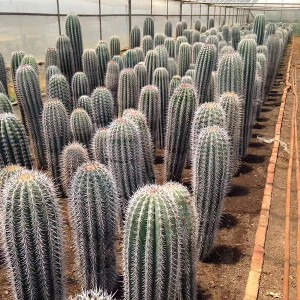Cacti are an interesting group of plants that are able to not only survive but thrive in some of the harshest environments on earth. Living primarily in arid and semi-arid areas, they have developed a fascinating array of adaptations to ensure their survival.
One of the most remarkable adaptations of cacti is their ability to store water. Their thick, fleshy stems act as water reservoirs, allowing them to withstand long periods of drought. These stems are able to expand and contract as water availability fluctuates, allowing the cactus to store as much water as possible during rainfall and conserve moisture during droughts. This adaptation not only helps the cacti survive, but also thrive in water-scarce habitats.
In response to the intense heat of their native habitat, cacti have also developed unique structural features. Their spines are actually modified leaves that help protect the plant from too much sunlight and prevent water loss through evaporation. The spines also deter herbivores from eating cacti because they are often sharp and prickly. Additionally, some cacti have a waxy outer layer on their stems called cuticle that acts as a protective barrier against water loss.
Cacti have also evolved specialized root systems to adapt to arid environments. Instead of the long, branched roots commonly seen in other plants, they have shallow, extensive root systems that allow them to quickly absorb any available water, even small amounts. These roots are also able to quickly absorb water when it is available, ensuring efficient water uptake.

The ability to reproduce is vital to the survival of any species, and cacti have developed unique methods to ensure successful reproduction in harsh habitats. Many cacti, such as the iconic saguaro cactus, rely on pollinators such as bats, birds and insects for cross-pollination. They produce showy flowers and nectar to attract these pollinators, ensuring the transfer of pollen from plant to plant. Additionally, cacti have developed the ability to reproduce asexually through processes such as division and branching. This ability allows them to colonize an area quickly and increases their chances of survival in challenging environments.
All in all, cacti are really well adapted to arid environments. From their ability to store water to their specialized photosynthetic process, these plants successfully overcome extreme heat and lack of water. With their unique physical characteristics and physiological strategies, cacti are living proof of the extraordinary way nature adapts and thrives in the harshest conditions.
Post time: Nov-29-2023